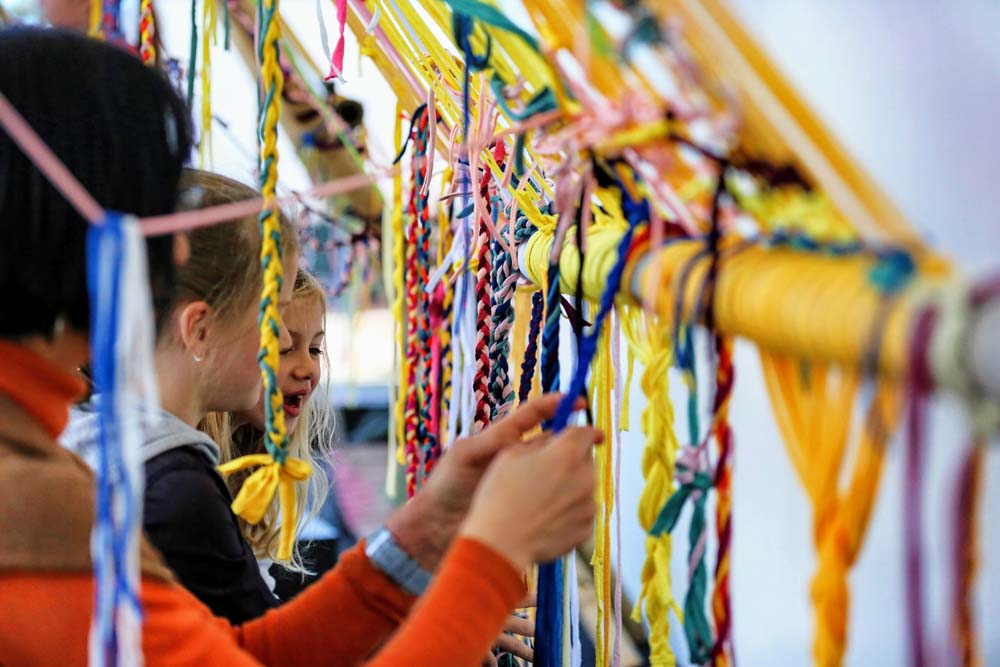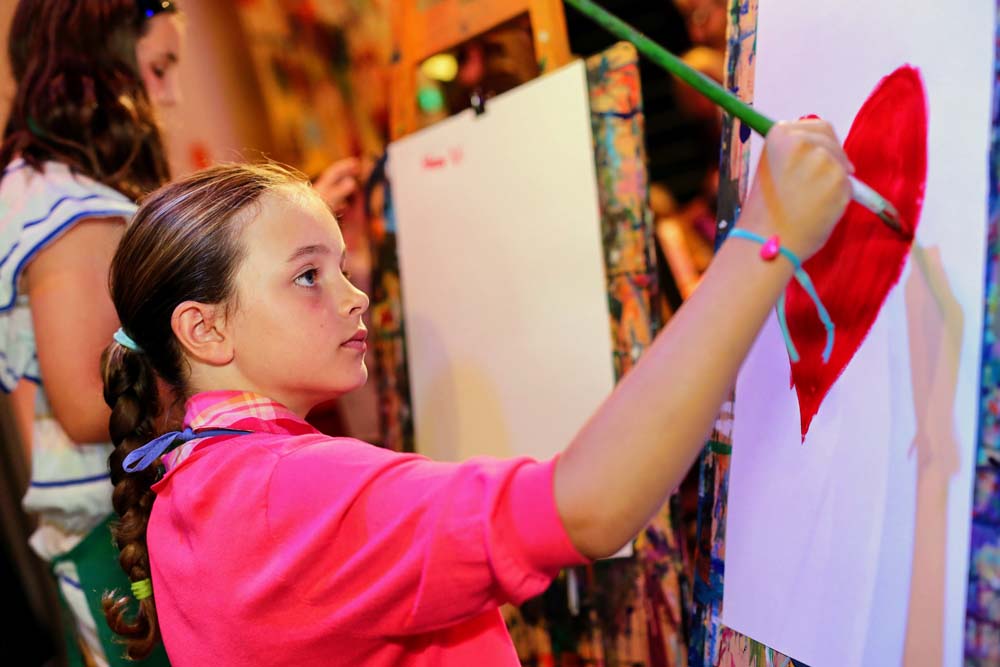Ask any parent what they want most for their child and their answer will usually be “Happiness”. But in an ever-changing world, particularly during a global pandemic, how do we encourage our children to embrace their wellbeing and explore ways to be conscious of improving it? One simple, fun and low-cost way to do this is through creative expression.
For many years now, we have known the benefits of a creative pursuit for wellbeing and enjoyment; whether it be painting, singing, dance, or indulging in “creative mindfulness” projects – such as colouring books, tapestries, meditation and craft. Tapping into your creative spirit can be a calming way, especially for children and young people, to express yourself and communicate.
However, in times of uncertainty, creative expression is also a great technique to start a conversation or share an idea that might otherwise be hard to verbalise.
To help you explore creative mindfulness and wellbeing with the little people in your life, the Frankston Arts Centre team has suggested these easy activities – perfect to do one on one, or even as a family. During 2020, we have all been stretched and challenged. Open conversation and positive connection will always be beneficial to building healthy relationships.

Make a Gratitude Journal
A gratitude journal is a lovely way to be thankful for something or someone, or to articulate a positive interaction that day. Younger children might need an adult to help them write things down while older children can do this independently.
- Pick out a journal that looks appealing, or decorate a cheap exercise book with textas, pencils or magazine pictures.
- Before writing or drawing in your gratitude journal, choose a ritual to repeat beforehand each time. You might play a favourite song, sing a little rhyme, or take a moment to deeply breathe and relax.
- Express Gratitude
- Think about something positive that happened in your day… it could be as simple as enjoying the sun on the walk to school, playing with friends, or getting a good result on a project. It might be good to talk about this first with someone you trust! They might be able to help you articulate how you feel.
- On a page in your journal, write about what you are thankful for or draw an image of how it made you feel. If you’re not a confident drawer, you could find a picture in a magazine depicting the feeling. You could make a collage of images – or even use colours to make an abstract drawing of the colours the moment made you feel. You could write a poem or use lyrics from your favourite song!
- Somewhere on the page, you might want to mark the date so you can reflect back to think about the things you have to be grateful for. Sometimes, when moments are tough – having a record of these things can help pull us out of a bad mood, or feeling that we are lost.
Some examples of moments of gratitude could be:- Something someone did for you today
- A person who you love
- Something you like to do
- A talent you have
- A part of your body you are grateful for
- Something that made you laugh today
- A song you like
- A game you like to play
- A new skill you have learned
- A food you like to eat
- A pet that you love
- A memory of something you have done in the past
- If your moment of gratitude is about someone else, you might want to share the love by calling them to tell them; this connection will make you feel good and the other person will feel valued (improving their wellbeing!).
Tip: Journals can be private spaces, so some young people might not want to share their entries and that is okay! Be encouraging and ask questions – just remember that the result might be a private thing, just for their own eyes.
Colour Breathing
Colour breathing is a simple stress reducing activity that involves picturing a colour in your mind that represents how you want to feel.
Tip: this works best in a quiet and comfortable place. Young children will need a grown up to guide them, while older children may do this independently.
- Sit or stand so that your body is straight.
- Close your eyes.
- Think of a colour that makes you feel relaxed or happy.
- Imagine that colour is all around you.
- Now think of a colour that makes you feel sad or angry.
- Slowly breathe in and imagine the relaxing or happy colour filling your lungs.
- As you breathe out, imagine the colour that makes you feel sad or angry mixing with the colour that makes you feel relaxed or happy.
- Watch as the sad or angry colour mixes with the relaxed or happy colour and it disappears.
- Each time you breathe in, imagine more of your relaxing colour filling your body; your whole body is filling with that colour and you are feeling relaxed.
- Each time you breathe out, see the sad or angry colour leaving your body; your worries and sadness are being let out and going far away.
- Keep going until you stop breathing out your sad or angry colour; now there is none of that colour left and only the relaxing colour is in your body.
Having recently expanded, with three Arts Therapists joining the Frankston Arts Centre team as part of the Working For Victoria initiative, the FAC looks forward to providing a range of Arts Wellbeing activities for all ages and abilities over the coming months.



